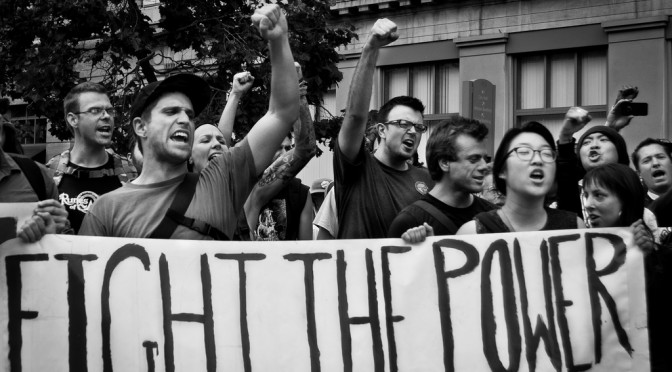
Bill Hohlfeld, LaborPress’s resident historian and educator, started out as an ironworker. He describes labor history as “literally, our story. It’s the chronicle of our ancestors.”
Gotta know your labor history…
It tells us who the farm girls were who went to work in the textile mills of New England; or the cigar workers of New York, who read the latest news to one another as they sat rolling Panetellas; or the Irish immigrants who built the first structural steel buildings in Chicago, and passed a hat to bury a fallen brother. These were the ordinary people who accomplished extraordinary feats, created their own victories, and a future for us through their sacrifice, perseverance, and toil.”
In his description, long-time activist and author Andy Piascik focuses on labor’s struggles: “In fighting for freedom and justice in their workplaces, homes and communities, working people have contributed a great deal to the cause of freedom and justice as a whole. That is a history worth studying, documenting, and popularizing in its own right. It’s also worth knowing about in the ongoing efforts to make this a better society, all the more given how many of us are currently under assault from so many directions.”
In Doing History from the Bottom Up, labor historian, author and activist Staughton Lynd wrote about the question that led him to history to begin with: “What help can the past give us in imagining the fundamental change needed by a society that is still racist, still unrepentantly dedicated to capitalism and its global expansion, and still embroiled in seemingly endless warfare?”
In the historian Eric Foner’s review of a new biography, Goddess of Anarchy, by Jacqueline Jones, about the life of Lucy Parsons, he points to the complex connections between racial and class inequality in America and what this history has to tell us. Foner writes: “With its economic instability, mass immigration, corrupting influence of money on politics, and ever-increasing gap between the rich and everyone else, our current era bears more than a slight resemblance to the late nineteenth and early twentieth centuries, dubbed by Mark Twain the Gilded Age. There are also striking differences. Back then, larger-than-life radical organizers—Eugene V. Debs, Emma Goldman, Bill Haywood, and others—traversed the country, calling on the working class to rise up against its oppressors. Today’s critics of the capitalist order seem tame by comparison.”
But these legendary names are largely forgotten and their stories have faded from memory. There are many disparate efforts to make labor history come to life—calendars and walking history tours, curriculum guides, field trips to labor history sites and even a Boy Scout Labor Merit Badge,. But there’s one more tool in our arsenal that can make a significant contribution to preserving the record of struggle, and in doing so, promote a consciousness that equips working people with the knowledge about their own past, and that is journalism.
Providing some historical background and context to reporting about the lives of working people is a potent ingredient. To borrow a phrase from the journalist David Ignatius, this is a form of “applied history.” The teachers’ revolt in West Virginia sparked thousands of teachers in other states to walk out and conduct militant, unlawful strikes. Jenny Craig, a middle-school special education teacher on strike in West Virginia pointed out that, “People are starting to get angrier and remember our history, remember our roots.” The roots of struggle in this besieged state go deep. Recovering these stories strengthens any reporting on our current conditions. Journalists can make a great contribution by finding ways to recover the past and add ballast and depth to their reporting through the lens of labor history.
Author’s Note: The Debra E. Bernhardt Labor Journalism Prize is an award of $500 given to an article that furthers the understanding of the history of working people. To enter, visit LaborArts.org/Bernhardt.
Jane LaTour is a New York City labor activist and journalist. She is the author of Sisters in the Brotherhoods: Working Women Organizing for Equality in New York City and is working on an oral history about union dissidents and the limits of reform in organized labor. She can be reached at [email protected]







































